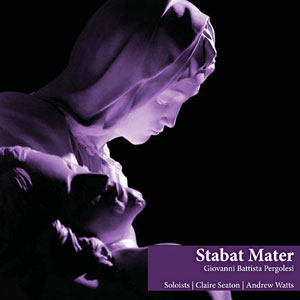CHOIR RECORDINGS

Pergolesi: Stabat Mater
Pergolesi’s finest and best-known work

Recording Information
Track List
- Stabat Mater
- Cujus animam gementem
- O quam tristis et afflicta
- Quae moerebat et dolebat
- Quis est homo
- Vidit suum dulcem natum
- Eja mater fons amoris
- Fac, ut ardeat cor meum
- Sancta mater, istud agas
- Fac ut portem Christi mortem
- Inflammatus et accensus
- Quando corpus morietur
Soloists:
Claire Seaton – soprano
Andrew Watts – counter tenor
Chamber Organ:
Benjamin Bayl
Instrumentalists:
Nicole Wilson – first violin
Sylvain Vasseur – second violin
Amy Wilson – viola
Bozidar Vukotic – cello
Thomas Goodman – double bass
Recorded in St Bride’s Church on 10th & 11th February 2005
Co–produced by Edward Armitage, Benjamin Bayl & Geoffrey Mitchell
Engineered & Edited by Edward Armitage
Photograph reproduced by kind permission of Gemma Iles; Cover design by Ben Kaye

Programme Notes
The text of the Stabat Mater represents the kind of religious poetry that flourished in Central Italy in the late medieval times. It is based upon the prophecy of Simeon that a sword was to pierce the heart of Christ’s mother Mary (Luke 2: 35). The concept of ‘God’ in Christianity is male, yet in the Stabat Mater and one other great religious text, the Magnificat, we find a unique feminine perspective. In its first eight stanzas the poetry expresses a deep compassion for the mother of Christ as she stands and watches her son as he suffers on the cross and in the second stanza direct mention is made to the prophesy of Simeon. After the eighth stanza the poet prays to Mary to let him share her grief and to let him suffer with Jesus and for her intercession. In the last stanza the poet prays directly to God for a place in paradise.
The words have been ascribed to Jacapone da Todi, a thirteenth century Franciscan monk but this is still very much in debate and authorship has also been ascribed variously to St Gregory the Great who died in 604, St Bernard of Clairvaux (d. 1153), Innocent III (d. 1216), St Bonaventure (d. 1274), Jacopone (d. 1306), Pope John XXIII (d. 1334), and Gregory XI (d. 1378). Whatever its provenance it’s clear that it was well known to all classes by the end of the fourteenth century. It is found in several European (but not English) Missals of the fifteenth century, but was not introduced into the Roman Breviary and Missal until 1727. In the Breviary it is divided into three parts: at Vespers, “Stabat Mater dolorosa”; at Matins, “Sancta Mater, istud agas”; at Lauds, “Virgo virginum praeclara”.
The Pergolesi setting was written in about 1735 and was first printed in London in 1749. It became the most frequently published single work of the 18th century. Pergolesi (1710-1736) composed it at the end of his life which was spent at a Franciscan monastery in Pozzuoli and it was written as a replacement for the Allesandro Scarlatti setting in use at the church of Maria dei Sette Dolori in Naples.
VIEW AND LISTEN TO OTHER RECORDINGS

STAY UP TO DATE
WITH NEWS FROM ST BRIDE’S
Subscribe to our newsletter to receive alerts for
events and advance information about seasonal services.
We protect your data and never overwhelm your inbox.
SUBSCRIBE